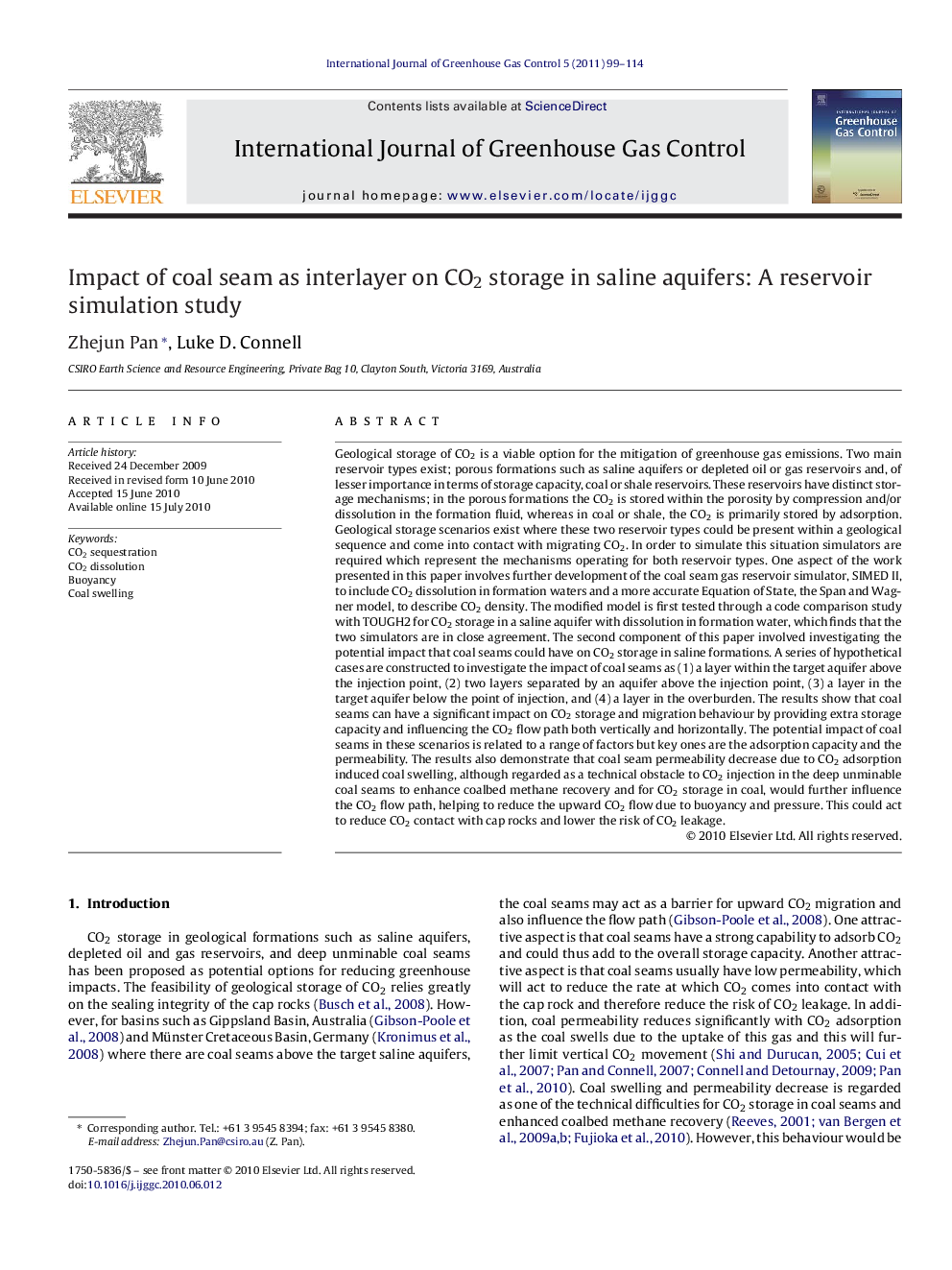| کد مقاله | کد نشریه | سال انتشار | مقاله انگلیسی | نسخه تمام متن |
|---|---|---|---|---|
| 1743339 | 1522023 | 2011 | 16 صفحه PDF | دانلود رایگان |
عنوان انگلیسی مقاله ISI
Impact of coal seam as interlayer on CO2 storage in saline aquifers: A reservoir simulation study
دانلود مقاله + سفارش ترجمه
دانلود مقاله ISI انگلیسی
رایگان برای ایرانیان
کلمات کلیدی
موضوعات مرتبط
مهندسی و علوم پایه
علوم زمین و سیارات
فرآیندهای سطح زمین
پیش نمایش صفحه اول مقاله

چکیده انگلیسی
Geological storage of CO2 is a viable option for the mitigation of greenhouse gas emissions. Two main reservoir types exist; porous formations such as saline aquifers or depleted oil or gas reservoirs and, of lesser importance in terms of storage capacity, coal or shale reservoirs. These reservoirs have distinct storage mechanisms; in the porous formations the CO2 is stored within the porosity by compression and/or dissolution in the formation fluid, whereas in coal or shale, the CO2 is primarily stored by adsorption. Geological storage scenarios exist where these two reservoir types could be present within a geological sequence and come into contact with migrating CO2. In order to simulate this situation simulators are required which represent the mechanisms operating for both reservoir types. One aspect of the work presented in this paper involves further development of the coal seam gas reservoir simulator, SIMED II, to include CO2 dissolution in formation waters and a more accurate Equation of State, the Span and Wagner model, to describe CO2 density. The modified model is first tested through a code comparison study with TOUGH2 for CO2 storage in a saline aquifer with dissolution in formation water, which finds that the two simulators are in close agreement. The second component of this paper involved investigating the potential impact that coal seams could have on CO2 storage in saline formations. A series of hypothetical cases are constructed to investigate the impact of coal seams as (1) a layer within the target aquifer above the injection point, (2) two layers separated by an aquifer above the injection point, (3) a layer in the target aquifer below the point of injection, and (4) a layer in the overburden. The results show that coal seams can have a significant impact on CO2 storage and migration behaviour by providing extra storage capacity and influencing the CO2 flow path both vertically and horizontally. The potential impact of coal seams in these scenarios is related to a range of factors but key ones are the adsorption capacity and the permeability. The results also demonstrate that coal seam permeability decrease due to CO2 adsorption induced coal swelling, although regarded as a technical obstacle to CO2 injection in the deep unminable coal seams to enhance coalbed methane recovery and for CO2 storage in coal, would further influence the CO2 flow path, helping to reduce the upward CO2 flow due to buoyancy and pressure. This could act to reduce CO2 contact with cap rocks and lower the risk of CO2 leakage.
ناشر
Database: Elsevier - ScienceDirect (ساینس دایرکت)
Journal: International Journal of Greenhouse Gas Control - Volume 5, Issue 1, January 2011, Pages 99-114
Journal: International Journal of Greenhouse Gas Control - Volume 5, Issue 1, January 2011, Pages 99-114
نویسندگان
Zhejun Pan, Luke D. Connell,